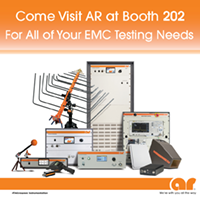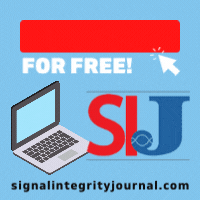KEYNOTE PRESENTATION
Tuesday 8:30 - 10:00 AM, August 2, 2022 in Room 300B
Return-to-Flight Electromagnetic Measurements: The NASA Shuttle Ascent Debris Radar System
 Speaker:
Speaker:
Brian M. Kent, Ph.D.
Fellow, IEEE, AMTA, AFRL,
Independent Aerospace Consultant
Abstract: The NASA Debris Radar (NDR) system was developed to characterize ascent debris liberated during the Shuttle’s crucial ascent phase as it entered orbit. Radar is generally well suited for characterizing ascent debris and is essential during night launches when optical sensors are severely degraded due to dynamic range saturation between the bright plume and black sky. The NDR mission presents challenging radar requirements in terms of target detection, tracking, minimum detectable radar cross-section (RCS), calibration accuracy, power profile management, and operational readiness. This talk begins by revisiting the Columbia accident investigation, followed by a description of the NDR system. The NDR consists of stationary C-band radar located at Kennedy Space Center and two sea-based X-band radars. During its three-year development effort, the NDR team examined static and dynamic radar signatures of the shuttle and liberated debris, and executed an “in-situ” Electromagnetic Interference (EMI) Measurement on the Orbiter “Discovery” to certify its safety from unintentional NDR induced EMI. NASA’s Shuttle Mission Managers required a definitive safety assessment of the orbiter health after the ascent phase within 24-30 hours of launch. Customized NDR-developed analysis tools and software provided shuttle metric data in near real-time, visualized metric and signature data during post-mission analysis, and automatically detected and characterized debris tracks in signature data. These tools eventually provided ballistic numbers for any detected ascent debris objects, and assess material type, size, release location as well as threat to the orbiter based on radar scattering and ballistic properties of the debris. The system was ultimately used for every Shuttle mission post Columbia.
Dr. Kent emphasizes that this effort involved the sustained contribution of hundreds of engineers from more than 10 collaborative organizations, and its overall success was solely due to the team’s efforts and dedication to the mission. The sequence of events and lessons learned described in this talk have applicability throughout the Aerospace Industry. The EMC audience can expect to gain considerable insight into space qualified subsystem test and evaluation.
Speaker Biography
Dr. Brian M. Kent is currently an independent aerospace consultant with over 43 years of experience in electromagnetic analysis and radar signature measurement technology. He is a Fellow of the Institute of Electrical and Electronics Engineers (IEEE) and an international IEEE Distinguished Lecturer for the Antenna and Propagation Society. He is also a Fellow of the Antenna Measurement Techniques Association and of the Air Force Research Laboratory. In 2009, he was a Meritorious Presidential Rank Awardee. Dr. Kent also continues to serve as Adjunct Professor of Electrical Engineering with Michigan State University's Department of Electrical Engineering.
From 2014-2022, Dr. Kent served as Chief Scientist and S&T Lead for Electromagnetics (EM), Radio Frequency (RF), and Sensing Systems for Applied Research Associates (ARA). Prior to ARA, he was a US Air Force Career Civilian employee, having served multiple assignments and organizations over a 37-year career. In his final USAF assignment, he served as member of the scientific and professional cadre of senior executives as the Chief Technology Officer, Air Force Research Laboratory (AFRL), Wright-Patterson Air Force Base, Ohio. He serves as AFRL's principle scientific/technical advisor and primary authority for the technical content of the Science and Technology portfolio. He was ultimately responsible for AFRL’s overall technical research program to assure its adequacy and efficiency in meeting national, DOD, USAF, AFMC, and AFRL objectives in core technical competency areas.
Dr. Kent is an internationally recognized scientific expert, and has provided technical counsel and advice to USAF senior management as well as professional staff of multiple US government organizations. He collaborated on numerous interdisciplinary research problems that encompass multiple AFRL directorates, customers from other DOD components, and the manned space program managed by NASA. His technical specialties include EM Scattering and Material Property Measurements, Radar, Antenna, and Radar Cross Section Measurements, Radar Performance Evaluation, RF/EO Sensing Technologies, and Passive/Active Electronic Warfare. He has over 140 documented publications, reports, and book chapter contributions. Dr. Kent co-holds two NASA patents, one on the NDR debris assessment software and a second related to an active orbital debris removal concept.



